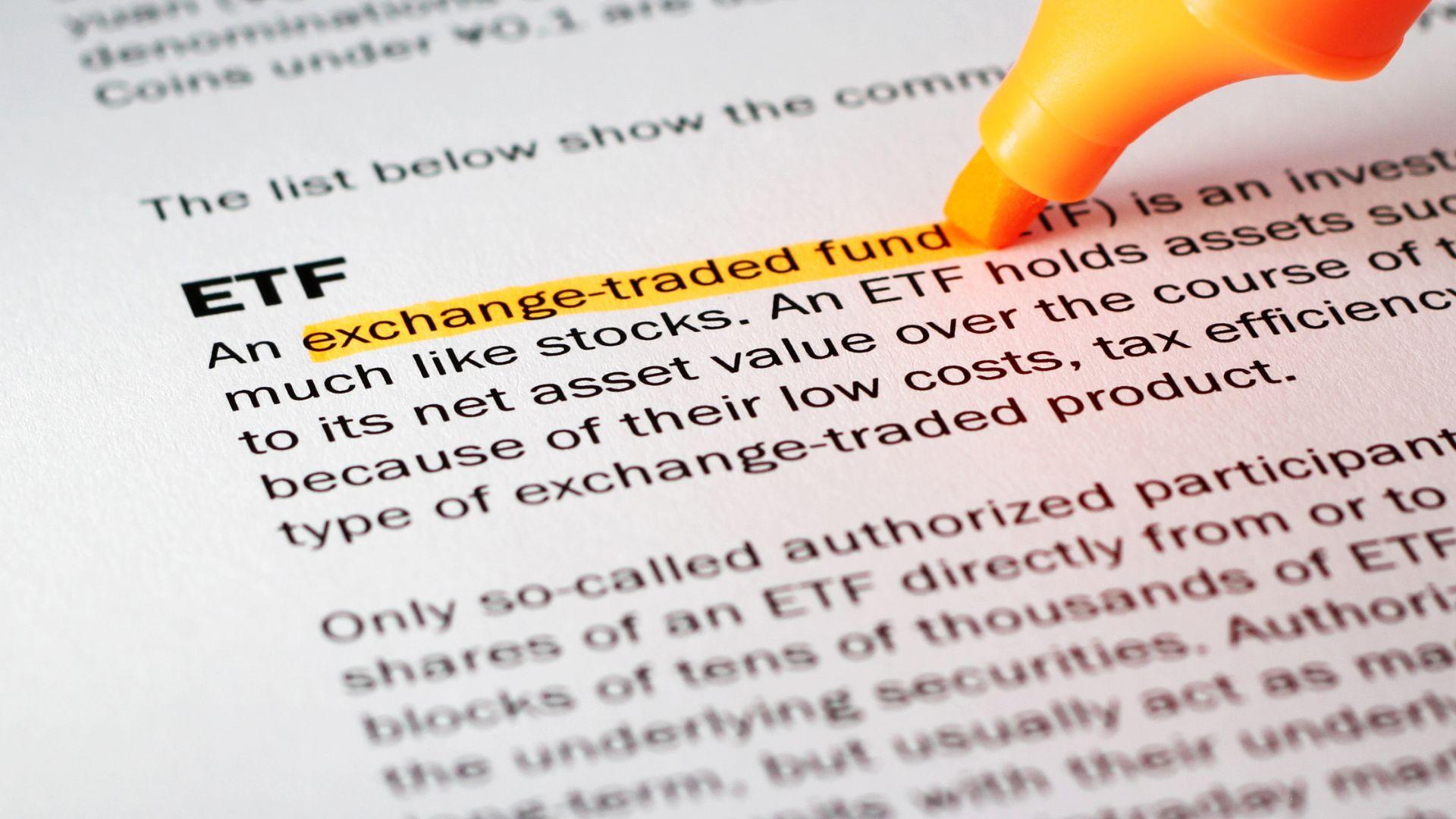Imagine you want to invest in the stock market, but you’re not quite ready to dive headfirst into individual stocks. Maybe you’re looking for a more straightforward way to diversify your investments without the hassle of researching and picking individual companies. That’s where Exchange-Traded Funds (ETFs) come into play. They’re like the friendly bridge between stocks and mutual funds, and in this essay, we’ll delve into what exactly an ETF is and why it’s become such a popular investment vehicle.


First things first, ETF stands for “Exchange-Traded Fund.” It’s a mouthful, but the concept is pretty simple. Think of an ETF as a bundle of different assets, kind of like a mixed bag of chocolates. These assets can include stocks, bonds, commodities, and even real estate. When you invest in an ETF, you’re essentially buying a share of this bundle, and your investment mirrors the performance of the assets within the bundle.
The main perk of ETFs is that they offer diversification without requiring you to pick individual investments. For example, if you buy an ETF that tracks the S&P 500, you’re essentially investing in 500 of the largest U.S. companies at once. No need to spend countless hours researching each company. It’s like the lazy person’s (or busy person’s) way to diversify.
Now, you might be wondering, “How do I buy and sell ETFs?” Well, here’s the cool part: they’re traded on stock exchanges, just like individual stocks. You can buy or sell them throughout the trading day, just like you would with Apple or Google stocks. This liquidity is a significant advantage because it means you can react to market changes quickly.
Another nifty feature of ETFs is their transparency. You can check the list of assets within an ETF, called its “portfolio,” as often as you like. So, you’re never left in the dark about what you’re investing in. That’s a level of transparency you won’t find with some other investment options.


One of the reasons ETFs have gained so much popularity is because of their low costs. They typically have lower expense ratios compared to mutual funds. This is because they’re often passively managed. In simple terms, a computer does the work of tracking the underlying assets, so you don’t have to pay high fees to a team of active fund managers.
ETFs also have tax advantages. Due to their unique structure, they tend to generate fewer capital gains, which can save you some money come tax season. Always a plus!
Now, you might be thinking, “ETFs sound fantastic, but are there any downsides?” Well, there are a few things to keep in mind. First, while ETFs offer diversification, it’s not absolute protection. If the entire market takes a hit, your ETF will feel it too. Secondly, while they generally have lower fees, you might still have to pay a commission to your broker when you buy or sell ETFs.
Common Types of ETFs Available Today
The majority of Exchange-Traded Funds (ETFs) are index-based, aiming to replicate specific indexes or benchmarks. These indexes may be based on stocks like the STI or a bond index. Regardless of the underlying asset, an index ETF seeks to track index performance by holding all or a representative sample of the index.
Equity ETFs
Equity ETFs track an index of equities, offering coverage of large businesses, small businesses, or stocks from specific countries. They also enable targeting of sectors such as tech stocks or banking stocks, making them popular choices.
Bond/Fixed Income ETFs
Diversification is key in portfolio management. Therefore, professionals often invest in fixed-income and bond ETFs to spread investment risk while providing steady returns potentially at lower risk than equity ETFs.
Commodity ETFs
Commodities like gold, silver, or oil are sometimes challenging to access directly, making ETFs an attractive option. However, commodity ETFs can be less transparent and may use derivatives instead of directly owning the underlying asset, potentially carrying additional risk.
Currency ETFs
Currency ETFs invest in either single currencies or baskets of currencies, directly or through derivatives. While offering opportunities for currency strengthening or hedging, they may also add more risk to the ETF.
Specialty ETFs
Leveraged funds and inverse funds are specialty ETFs designed to meet specific needs. While they offer greater growth potential, they also come with higher risk, requiring careful consideration before investing.
Factor ETFs
Factor investing involves targeting specific drivers of return across asset classes, often accessed through rules-based ETFs known as “Smart Beta.”
Sustainable ETFs
The range of sustainable ETFs is expanding rapidly, combining traditional investment approaches with environmental, social, and governance insights to meet the growing demand for socially responsible investing.
Most Popular ETFs in Singapore
Let’s chat about the hottest ETFs in Singapore! These are the go-to choices for folks who want to spice up their investments without the whole stock-picking drama. Here’s the scoop on the top 10:
- SPDR STI ETF (ES3): This one follows the Straits Times Index, a mix of Singapore’s 30 biggest and juiciest companies on the stock market.
- Lion-OCBC Securities Hang Seng Tech US$ (HSS): It’s like your backstage pass to the Hang Seng Tech Index, home to the 30 tech giants of Hong Kong.
- SPDR Gold Shares ETF (O87): For those who love shiny stuff, this ETF tracks the glitzy world of gold.
- iShares USD Asia High Yield Bond Index ETF (O9P): If you’re looking for some extra income, this one’s all about high-yield bonds in Asia.
- Nikko AM STI ETF (G3B): Another player in the Straits Times Index game, helping you diversify your Singaporean stocks.
- NikkoAM-StraitsTrading Asia ex Japan REIT ETF (CFA): This ETF dives into the world of Real Estate Investment Trusts across Asia, excluding Japan.
- Nikko AM SGD Investment Grade Corporate Bond ETF (MBH): A fancy name for an ETF that invests in top-notch corporate bonds in Singapore.
- ICBC CSOP FTSE Chinese Government Bond Index ETF US$D (CYB): It’s all about Chinese government bonds if you’re into global diversification.
- ABF Singapore Bond Index Fund (A35): This one’s all about Singaporean bonds, giving you a taste of local debt markets.
- Lion Phillip S-REIT ETF (CLR): Get a slice of the action in the Singapore Real Estate Investment Trust scene.
Why are these ETFs so hot? Because they’re like a one-stop shop for diversifying your investments. For example, the SPDR STI ETF lets you invest in a whole basket of Singapore’s top companies without the headache of picking individual stocks. Similarly, the Lion-OCBC Securities Hang Seng Tech US$ ETF lets you ride the wave of tech giants in Hong Kong.
Most Popular ETFs
Let’s talk about the ETFs that everyone’s buzzing about! These are your easy-peasy tickets to dive into the stock market without going all Sherlock Holmes on individual companies. The crème de la crème among ETFs? The ones that follow the big-shot market indices like the S&P 500, Dow Jones Industrial Average, and Nasdaq 100. Why are they all the rage? Because they’re the no-fuss way to get a piece of the stock market pie, all diversified and cozy.
Now, if you’re curious about the hottest ETFs in town, here’s the skinny on the top 10, based on how often they’re traded:
- SQQQ ProShares UltraPro Short QQQ
- TQQQ ProShares UltraPro QQQ
- SPY SPDR S&P 500 ETF Trust
- SOXS Direxion Daily Semiconductor Bear 3x Shares
- QQQ Invesco QQQ Trust
- IWM iShares Russell 2000 ETF
- VOO Vanguard S&P 500 ETF
- VTI Vanguard Total Stock Market ETF
- VUG Vanguard Growth ETF
- IVV iShares Core S&P 500 ETF
But wait, there’s more to the story. Trading volume isn’t the same as assets under management (AUM). AUM is like the total cash stash in an ETF, and here are the top 10 ETFs that own the big bucks:
- SPY SPDR S&P 500 ETF Trust
- IVV iShares Core S&P 500 ETF
- VOO Vanguard S&P 500 ETF
- VUG Vanguard Growth ETF
- VTI Vanguard Total Stock Market ETF
- VGT Vanguard Information Technology ETF
- QQQ Invesco QQQ Trust
- VWO Vanguard FTSE Emerging Markets ETF
- IWM iShares Russell 2000 ETF
- VXF Vanguard S&P MidCap 400 ETF
Now, here’s where it gets interesting. There’s some overlap between the two lists, but they’re not the same. For example, the Invesco QQQ Trust (QQQ) ranks as the 6th most traded ETF but snags the 3rd spot by AUM. Why the mismatch? Well, QQQ is a bit pricier than the others, so folks trade it less often. Makes sense, right?
Choosing the right ETF is like choosing the perfect Netflix series for your mood. Consider your financial goals, how much risk you can stomach, and how long you plan to invest. And don’t forget about the expense ratio. It’s like the price tag for running the ETF, and it’s a little chunk of your investment that covers the ETF’s bills. So, whether you’re a newbie or a pro, make sure you do your homework before jumping into the ETF game!


Keep in mind that what’s popular today might not be tomorrow’s superstar. The world of ETFs is always evolving, with new ones popping up and old ones changing in popularity. So, don’t forget to do your homework before diving in.
A little heads-up: This isn’t an official “buy or sell” recommendation for any of the ETFs listed here. Your investment decisions should be based on your own research and financial goals. Happy investing!
Exchange-Traded Funds are a fantastic way to invest. They’re like the all-in-one tool in your financial toolbox, offering diversification, transparency, liquidity, and cost-effectiveness. Whether you’re a seasoned investor or just starting out, ETFs can be an excellent addition to your investment strategy. So, the next time you’re pondering your investment options, consider giving ETFs a closer look. Your financial future will thank you for it!






